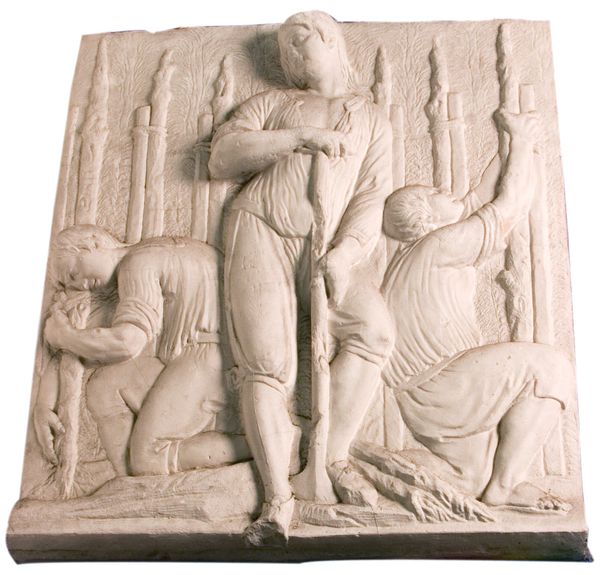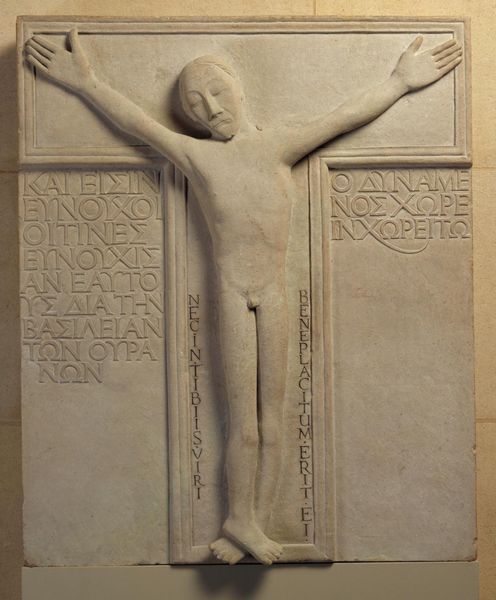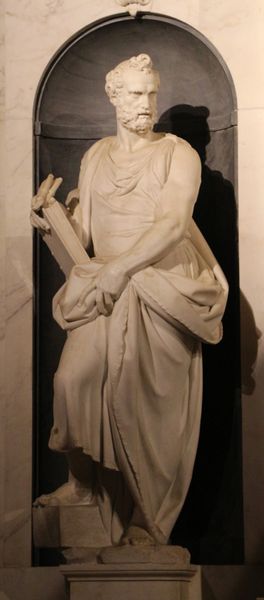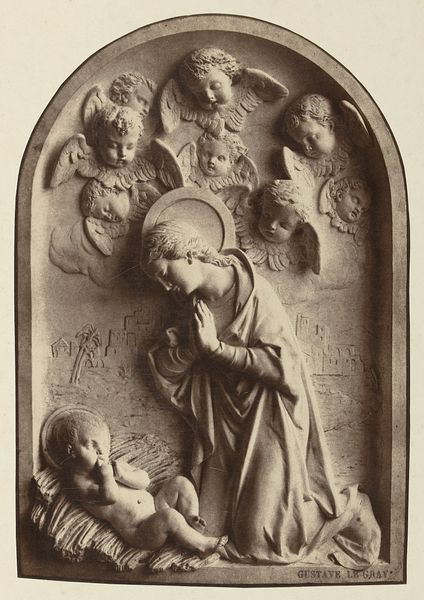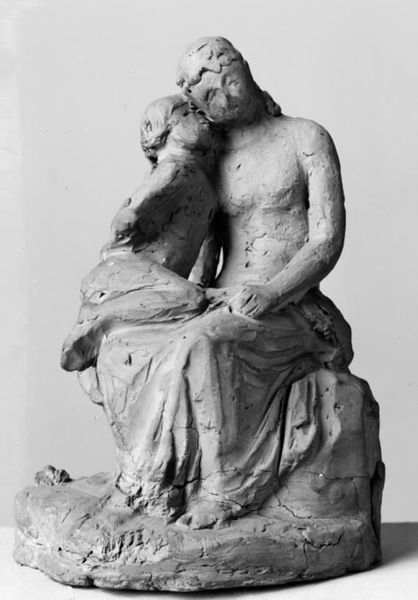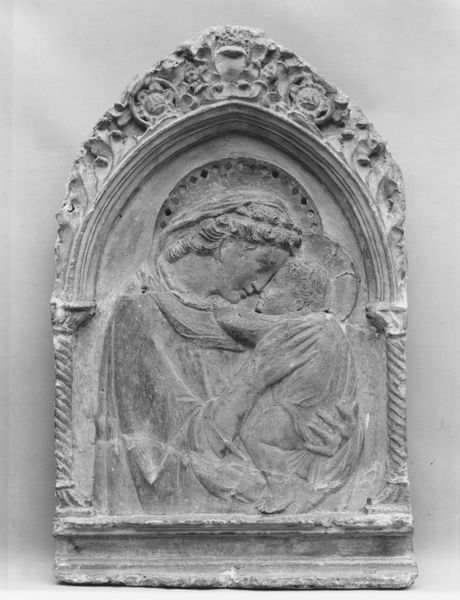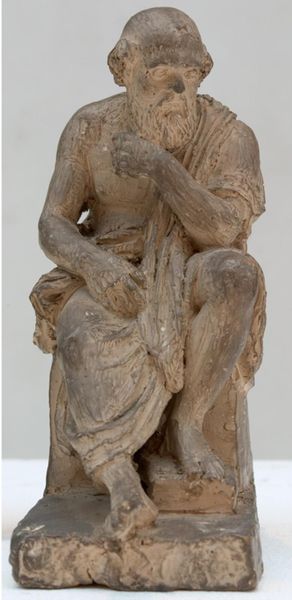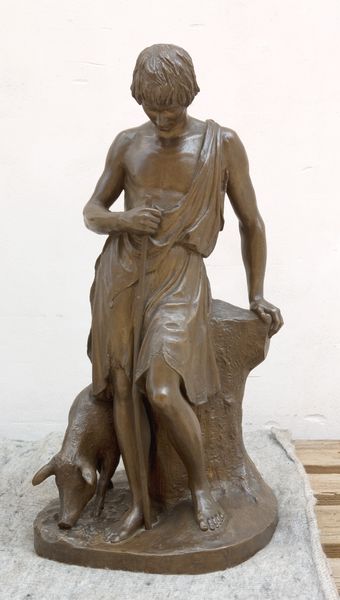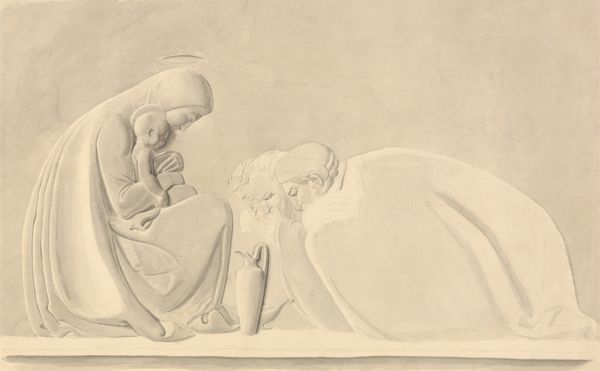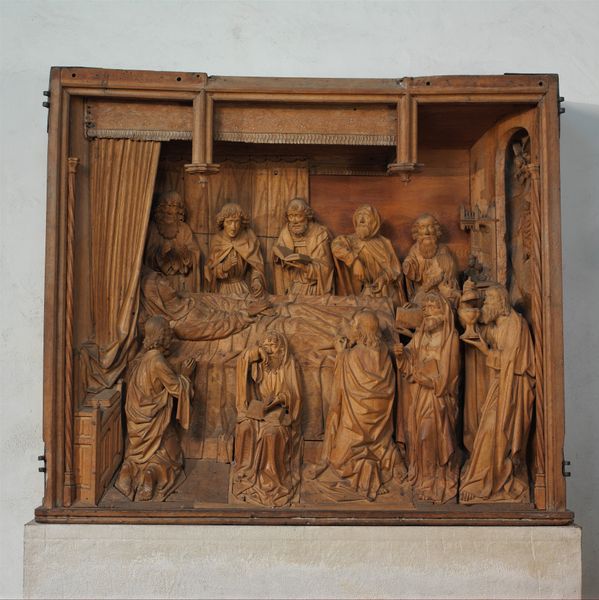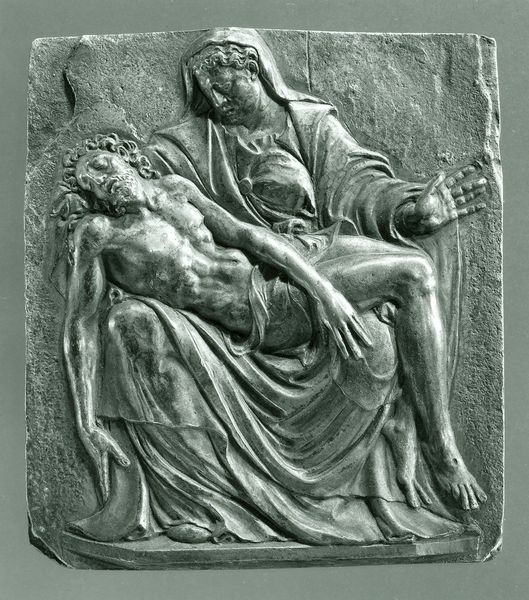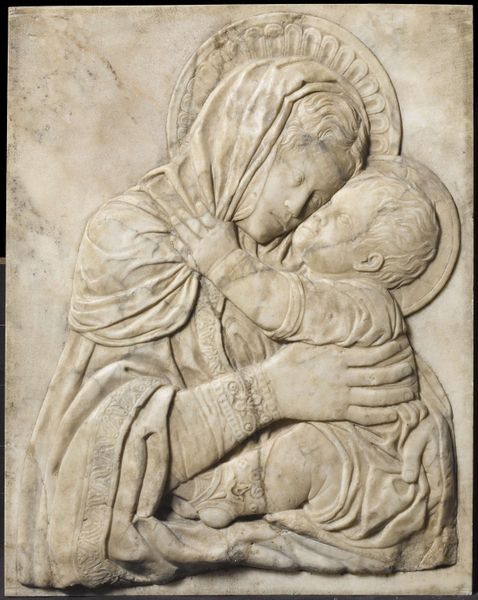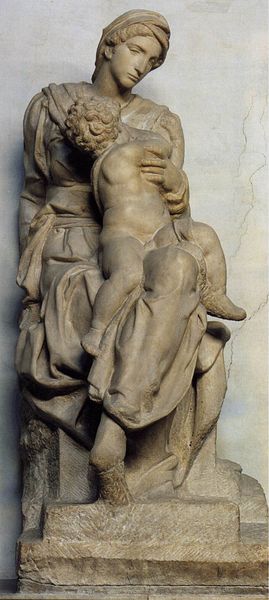
carving, relief, sculpture, marble
#
carving
#
sculpture
#
relief
#
figuration
#
sculpture
#
marble
#
italian-renaissance
#
early-renaissance
Copyright: Public domain
Curator: Look at the incredible softness radiating from this marble relief sculpture. Desiderio da Settignano, active in Florence during the Early Renaissance, completed "Vierge à l'Enfant" around 1460. Editor: Yes, I'm immediately struck by that. It’s incredible how he achieves such delicate details and fluid drapery in what is essentially carved stone. The Virgin's embrace, and the way the fabric folds suggest a comforting weight… it's moving. Curator: Absolutely. What makes this particular representation so poignant, beyond the technical mastery, is how it encapsulates prevailing notions of motherhood and feminine virtue during that period, linking to broader societal constructs. This is where a dialogue with feminist theory becomes critical. The Madonna embodies ideals of piety, tenderness, and maternal devotion – attributes consistently projected onto women throughout history. Editor: And the materiality is key to understanding that projection. Marble itself was a luxury material, so it immediately elevated the subject. Think about the labor involved; the skilled stonemasons who quarried, transported, and painstakingly shaped this block. That economic and social context directly informed the artwork's inherent value, both monetarily and symbolically. Curator: Precisely. Also, observe how Desiderio renders Mary's gaze downward, almost introspective. Considering its function – presumably intended for private devotion within an elite household – that sense of humble contemplation encourages a parallel in the viewer. It implicitly invites a privileged, usually female, viewer into this constructed narrative of motherhood. Editor: It's a powerful connection – facilitated, of course, through the object itself. The careful finishing, the smoothing and polishing of the marble; these acts are intrinsic to the message. Desiderio emphasizes beauty through highly refined handcraft, solidifying the preciousness and desirability associated with this idealized image. Curator: Ultimately, viewing this sculpture necessitates an acknowledgement of not only its formal artistic merits but also an exploration of its layered socio-cultural implications. It opens avenues into conversations concerning power dynamics, gendered expectations, and the persistent projection of ideals onto the female form throughout art history. Editor: Indeed, recognizing that "Vierge à l'Enfant" is as much about material production as it is about spiritual representation enriches our viewing. The artistic labor, and material choices together illustrate how these values took physical form, and continued to reinforce societal structures.
Comments
No comments
Be the first to comment and join the conversation on the ultimate creative platform.
